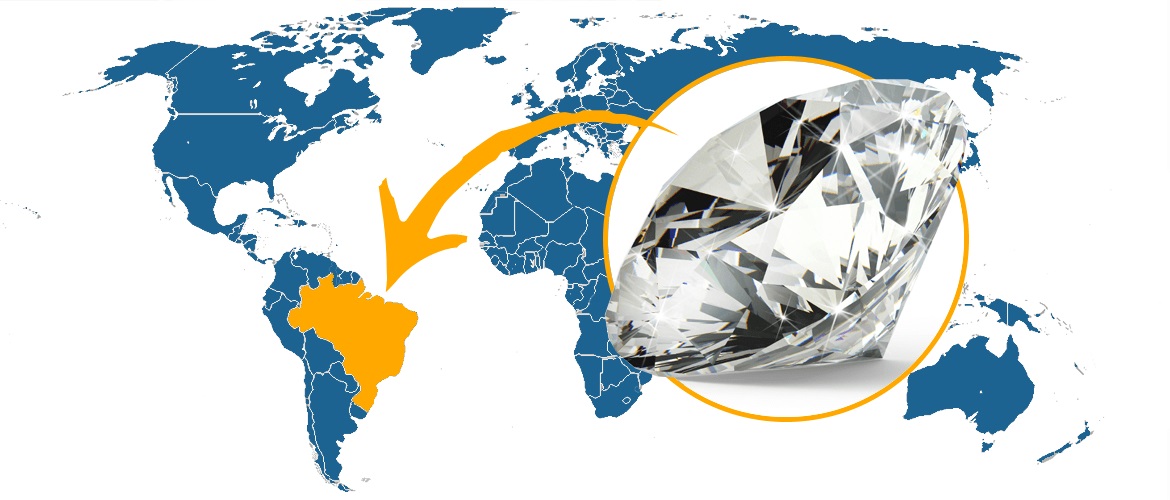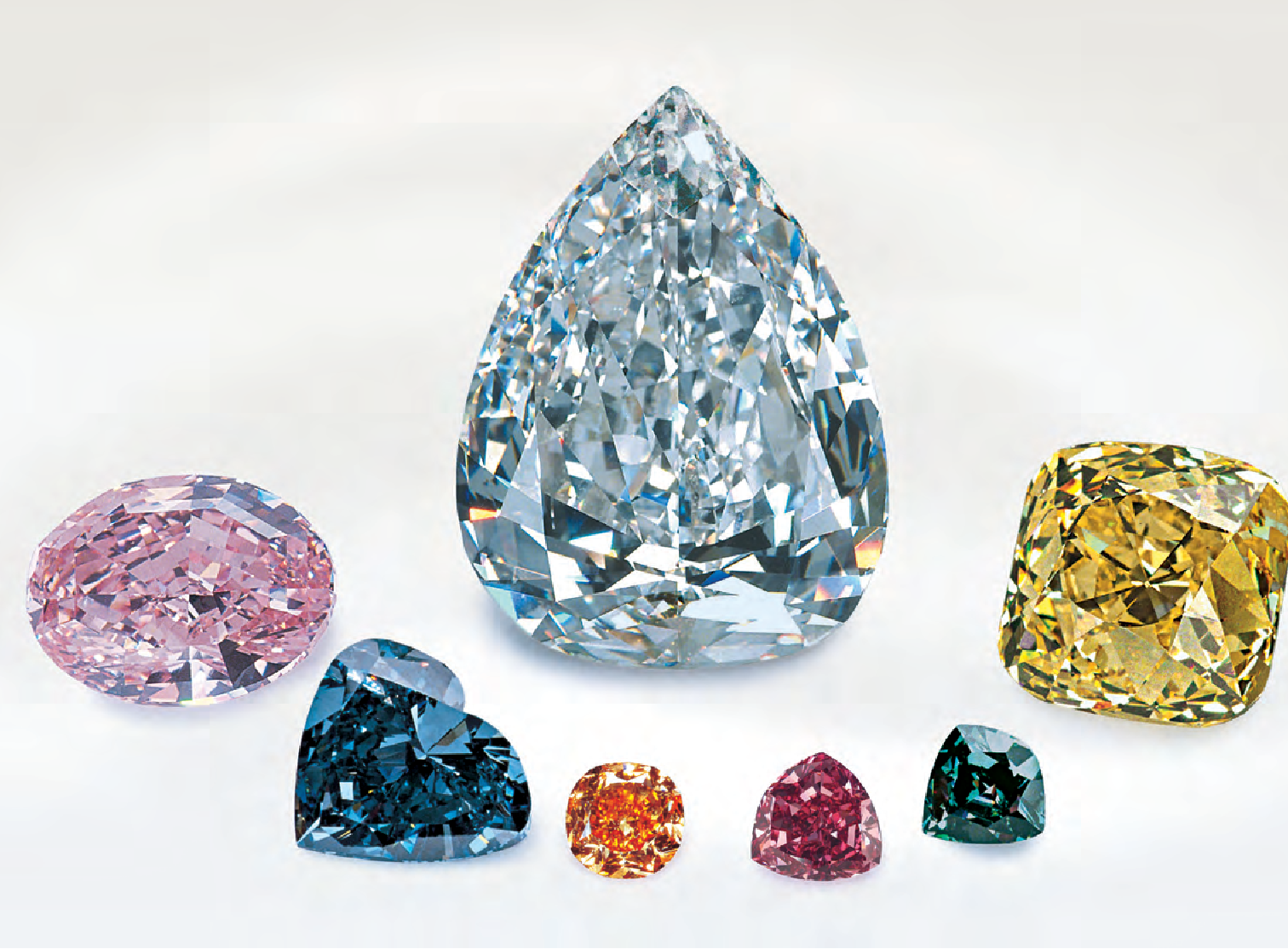A Gem Mineral with Properties for Industrial Use – Diamond and Its Use in the 21st CenturyA Gem Mineral with Properties for Industrial Use – Diamond and Its Use in the 21st Century
The diamond, with its captivating allure and multifaceted brilliance, has transcended time as a symbol of love, luxury, and resilience. In the 21st century, the role of diamonds has expanded beyond their traditional associations, permeating various sectors and industries. From their historical significance to their modern-day applications, diamonds have continued to redefine our technological, economic, and cultural landscapes. Let us embark on a comprehensive exploration of the enduring journey of diamonds in the 21st century.
The Diamond in History:
The history of diamonds is as illustrious and captivating as the gems themselves. Spanning centuries and civilizations, diamonds have served as powerful symbols of wealth, status, and love, while also holding deep cultural and spiritual significance. From their origins in ancient India to their prominence in modern-day jewelry, the journey of diamonds is a testament to their enduring allure and timeless appeal.

Ancient Origins:
The earliest known diamond mining and trade can be traced back to ancient India, where diamonds were revered not only for their beauty but also for their spiritual significance. Indian rulers adorned themselves with diamonds as symbols of strength, invincibility, and protection in battle. These early civilizations believed that diamonds possessed mystical powers, providing strength, courage, and protection to those who wore them.
Diamonds in Antiquity:
Diamonds have a rich history intertwined with various ancient civilizations, including the Greeks and Romans. In ancient Greece, diamonds were believed to be tears of the gods or splinters from falling stars, adding to their mystical reputation. The Romans, on the other hand, associated diamonds with romance and eternal love, incorporating them into various jewelry pieces, including rings and brooches.
Diamonds in the Middle Ages:
During the Middle Ages, diamonds symbolized power, wealth, and courage. They were often used to adorn royal crowns, swords, and other regal regalia. Diamonds were highly coveted by the European aristocracy and were considered symbols of divine favor and strength. Their scarcity and exceptional brilliance solidified their association with royalty and nobility, creating a mystique that endured through the ages.
Diamonds in the Modern Era:
The discovery of diamond deposits in Brazil and later in South Africa during the 18th and 19th centuries marked a significant turning point in the history of diamonds. The rise of diamond mining and trading companies, including De Beers, transformed the global diamond industry, leading to increased production, distribution, and commercialization of diamonds worldwide.
Contemporary Significance:
In the modern era, diamonds have retained their status as symbols of love and devotion, often adorning engagement rings and other significant jewelry pieces. They have become synonymous with timeless elegance, luxury, and enduring commitment. Beyond their use in jewelry, diamonds also find applications in various industrial sectors, owing to their exceptional hardness, thermal conductivity, and optical properties.
From their mystical origins in ancient India to their contemporary prominence in the global market, diamonds have transcended time and culture, leaving an indelible mark on the human experience. Their timeless allure continues to captivate hearts and minds, making them one of the most cherished and sought-after gemstones in the world.
Early Beginnings of Diamonds: De Beers and Diamonds in South Africa:
The early 20th century witnessed the emergence of De Beers Consolidated Mines, which played a pivotal role in shaping the global diamond industry. Founded by Cecil Rhodes, De Beers revolutionized diamond mining and marketing, establishing itself as a dominant force in the South African diamond market. The company’s strategic control over the supply and distribution of diamonds influenced market dynamics, ultimately shaping the trajectory of the global diamond trade for decades to come.
Gem vs. Industrial Diamonds:
Gem and industrial diamonds are two distinct categories of diamonds, each serving unique purposes and catering to diverse applications. Understanding the differences between these two types of diamonds is crucial in comprehending their respective roles in various industries and sectors.
Gem Diamonds:
Gem-quality diamonds are highly valued for their exceptional clarity, color, and brilliance, making them coveted for use in jewelry and ornamental adornments. These diamonds undergo meticulous grading and certification processes to assess their cut, clarity, color, and carat weight. Gem diamonds are primarily utilized in the following contexts:

Jewelry: Gem-quality diamonds are commonly featured in engagement rings, necklaces, earrings, and other high-end jewelry pieces. Their exquisite appearance and enduring quality make them prized possessions for those seeking to celebrate special occasions and create lasting memories.
Investments: Certain high-quality gem diamonds are considered valuable investment assets, with their scarcity and timeless appeal contributing to their long-term appreciation in value. Investors and collectors often acquire rare gem diamonds as part of their diversified portfolios.
Aesthetics and Art: Gem diamonds find applications in artistic creations, including sculptures, decorative pieces, and objets d’art. Their exceptional brilliance and unique optical properties make them sought after by artisans and designers for crafting exquisite and one-of-a-kind masterpieces.
Industrial Diamonds:
Industrial diamonds, on the other hand, are primarily valued for their exceptional hardness, thermal conductivity, and durability. These diamonds are used in a broad spectrum of industrial applications where their robustness and wear resistance are instrumental. Industrial diamonds find use in the following sectors:
Cutting and Polishing Tools: Industrial diamonds are employed in the manufacturing of cutting and polishing tools, including diamond-tipped saws, drills, and grinding wheels. Their hardness and abrasion resistance make them indispensable for precise cutting and shaping of hard materials such as concrete, glass, and ceramics.
Heat Sinks and Thermal Conductors: Industrial diamonds are utilized as heat sinks and thermal conductors in various electronic and thermal management applications. Their superior thermal conductivity enables efficient heat dissipation, making them valuable components in electronic devices, laser systems, and high-performance computing equipment.
Industrial Abrasives: Diamond abrasives are widely used in industrial applications for grinding, lapping, and polishing tasks. Their hardness and abrasive properties enable the precise and efficient shaping and finishing of hard materials in industries such as automotive, aerospace, and manufacturing.
Understanding the distinction between gem and industrial diamonds highlights the diverse applications and value propositions associated with each category. While gem diamonds celebrate the beauty and elegance of these precious gems in the realm of luxury and aesthetics, industrial diamonds embody resilience and functionality, serving as indispensable tools in various industrial and technological domains.
Conclusion
In the dynamic landscape of the 21st century, the diamond continues to assert its significance, serving as both a symbol of enduring love and an indispensable tool for technological innovation. From the development of advanced materials to the cultivation of sustainable mining practices, the journey of diamonds in the modern era reflects a profound blend of tradition, innovation, and responsible stewardship. As we embrace the transformative potential of diamonds, we honor their legacy while charting a path toward a more dynamic and sustainable future.…